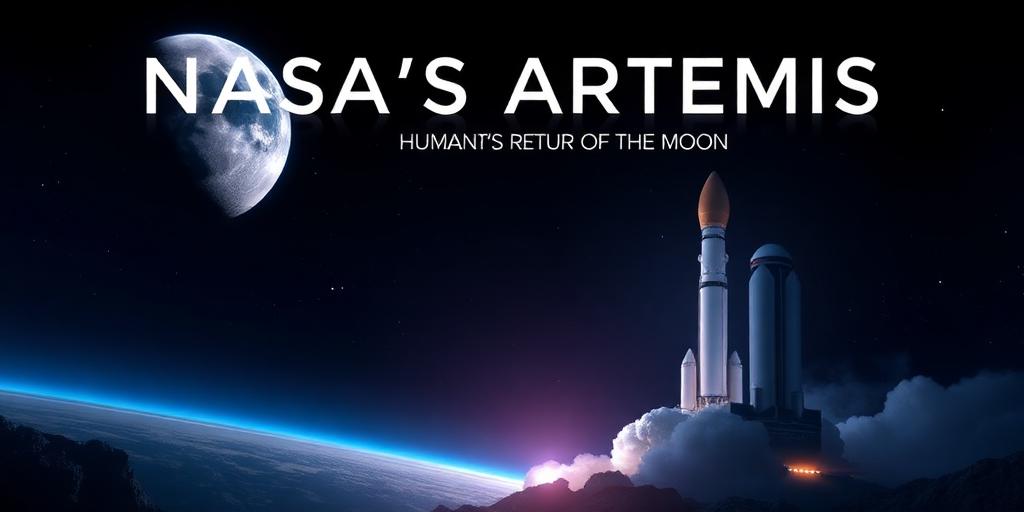NASA's Artemis Mission: Humanity's Return to the Moon
For decades, the idea of returning to the Moon has captivated the global scientific community and the public alike. Today, NASA's Artemis program stands as a testament to humanity's unyielding drive for exploration, charting a definitive course for our return to the lunar surface. This ambitious endeavor is not merely about planting flags; it represents a comprehensive strategy to establish a sustainable human presence on the Moon and utilize it as a critical proving ground for future deep-space missions to Mars and beyond.
The Core Objectives of the Artemis Program
The Artemis mission is fundamentally designed to expand human presence into the solar system, with the Moon serving as a foundational stepping stone. Its primary objectives are multifaceted and strategically aligned with long-term space exploration goals:
- Return Humans to the Lunar Surface: Specifically, landing the first woman and the first person of color on the Moon.
- Establish a Sustainable Presence: Developing technologies and infrastructure for long-duration stays and scientific research.
- Prepare for Mars Exploration: Using the lunar environment to test systems, technologies, and operational approaches essential for human missions to Mars.
- Foster International Collaboration: Engaging global partners through initiatives like the Artemis Accords, setting norms for peaceful and responsible space exploration.
- Advance Scientific Discovery: Exploring previously unvisited regions, particularly the lunar South Pole, for resources like water ice and conducting unique lunar science.
These objectives underscore a shift from transient visits to enduring exploration, signifying a new era in space endeavors.
Key Components Driving Artemis Forward
The successful execution of the Artemis program hinges on a synergy of cutting-edge technologies and robust infrastructure:
- Space Launch System (SLS): NASA's powerful super heavy-lift rocket, designed to propel the Orion spacecraft and critical cargo into deep space. The SLS is the backbone, providing the necessary thrust to escape Earth's gravity and reach the Moon.
- Orion Spacecraft: The crew vehicle engineered for deep-space travel, capable of carrying astronauts farther than any human-rated spacecraft before. Orion is equipped with advanced life support systems and provides a safe habitat for the journey to and from the Moon.
- Gateway: A planned lunar orbiting outpost that will serve as a multi-purpose waystation. It will facilitate access to the lunar surface, enable scientific research, and act as a communications hub for deep-space missions. The Gateway is a critical element for sustainable lunar operations and a potential rendezvous point for missions to Mars.
- Human Landing System (HLS): Developed by commercial partners, the HLS will transport astronauts from the Gateway to the lunar surface and back. This critical component ensures safe and efficient lunar landings and ascent capabilities.
The integration of these elements ensures a comprehensive and reliable system for lunar exploration, pushing the boundaries of human achievement.
Why the Moon, and Why Now?
The decision to return to the Moon is underpinned by strategic, scientific, and economic imperatives. The lunar South Pole, in particular, offers significant scientific promise due to the potential presence of water ice in permanently shadowed regions. This resource is vital not only for drinking water and oxygen but also for producing rocket fuel, enabling future missions further into the solar system.
Moreover, the Moon serves as an unparalleled testbed for technologies and operational procedures required for Mars missions. Extended stays, radiation exposure, and closed-loop life support systems can all be rigorously evaluated in a relatively accessible environment. From an economic standpoint, the Artemis program fosters commercial partnerships, driving innovation and creating new industries in space. Humanity's return to the Moon through the Artemis program signifies a profound commitment to understanding our solar system, expanding our technological capabilities, and securing our future as a multi-planetary species. The missions ahead, from Artemis I's uncrewed test flight to Artemis III's historic human landing, mark the beginning of a sustained era of lunar exploration, paving the way for the next giant leap: Mars.









